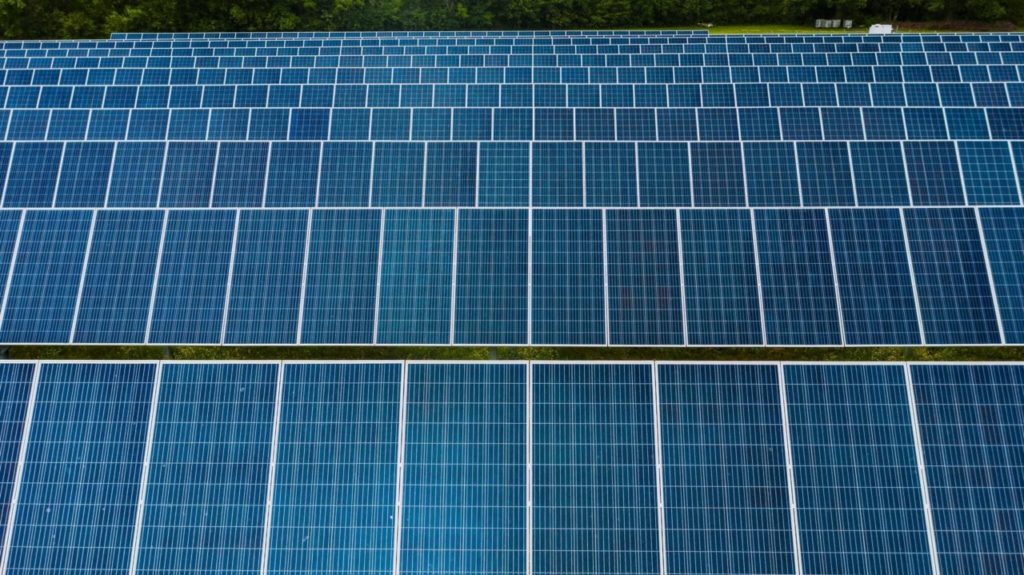
The Australian Renewable Energy Agency (ARENA) has published a report outlining the potential for the country to establish a solar PV manufacturing base, joining the trend across major global markets to mitigate “the risks of relying on foreign sources for energy supply”.
ARENA’s Silicon To Solar study seeks to outline a “credible pathway” for Australia to establish 10GW of polysilicon (poly-si) purification capacity and 5GW of ingot, wafer, cell and module production capacity from 2030.
Unlock unlimited access for 12 whole months of distinctive global analysis
Photovoltaics International is now included.
- Regular insight and analysis of the industry’s biggest developments
- In-depth interviews with the industry’s leading figures
- Unlimited digital access to the PV Tech Power journal catalogue
- Unlimited digital access to the Photovoltaics International journal catalogue
- Access to more than 1,000 technical papers
- Discounts on Solar Media’s portfolio of events, in-person and virtual
The report frames a domestic solar manufacturing base as a way to generate jobs, investment and income in Australia’s energy sector, diversify its economy and grow ancillary industries connected with solar PV. Chiefly, however, it seeks to establish security from a supply chain that is concentrated in China and – as with COVID-19, the invasion of Ukraine and the ongoing Red Sea situation – is susceptible to global disruption.
Policy is the key to unlocking manufacturing potential, the report says, and it breaks down the specifics of supporting each stage in the value chain. Both incentives for domestic products and sanctions on imports may be necessary under a “supportive policy ecosystem”.
Nuts and bolts
In terms of process, the roadmap would see 1GW of each component (poly-si, wafers, cells, modules) established initially, before a ramp-up to 5GW or 10GW by 2030.
As it stands, Australia has a presence in quartz mining and metallurgical silicon smelting (around 52,000 tonnes/year), but has no other significant manufacturing capacity across the entire solar value chain, barring 160MW of module production from native Australian manufacturer Tindo Solar.
Given the relatively simple nature of establishing module assembly plants, described as “low-hanging fruit” in the report, this would be the first capacity to come online under the plan, followed by wafer capacity, poly-si and finally cell capacity.
The report predicts that poly-si and ingot/wafer capacity could be exported to the US, EU or India in addition to supplying domestic capacity.
It also breaks down the specifics of setting up capacity at each stage of the value chain and the advantages or disadvantages therein. Notably, ARENA leans on Australia’s “history of close collaboration with China in the PV industry”, and points out that the strict tariffs on Chinese polysilicon and wafers entering the US market may mean that US companies would pay a premium for Australian-made products.
Solar cells will be the slowest product to develop capacity under the roadmap. “Rapid development of cell technology and large capacity scale-up present a challenge to setting up viable cell production domestically,” the report said. “Australia’s strong track record in cell research could lead to cutting-edge production, however, R&D, prototyping and pilot lines require additional time.”
Indeed, passivated emitter rear contact (PERC) solar cell technology, which has dominated the market since its invention 30 years ago and is only now being replaced by more advanced n-type tunnel oxide passivated contact (TOPCon) cells, originates from the University of New South Wales.
However, technological legacy does not guarantee a viable manufacturing market. Just ask Europe.
Bigger challenges
In Europe and the US, efforts have been underway to try and get a domestic solar manufacturing industry off the ground. Whilst the US’ IRA has made some notable headway, Europe’s industry is on the verge of collapse. PV manufacturing capacity in China is currently around three times global demand, which has played a part in driving module prices down to historic lows and increased competition in an already saturated industry.
The situations in Europe, the US and India, which all have varying degrees of success but have so far uniformly failed to compete with the Chinese market, could repeat themselves in Australia.
Bloomberg New Energy Finance, in its Energy Transition Investment Trends 2024 report last week, said that no new solar capacity would be needed to meet global demand through 2030. The “supply glut…weakens the case for localising production in markets with little existing solar manufacturing,” the report said.
This chastening prediction coincides with a blog from PV Tech head of research Finlay Colville, published last November, which predicted that 2024 will see a downturn in the silicon solar manufacturing industry as a result of price pressures and the massive expansions seen over the last two years.
Growing demand
Australia will install a minimum of between 5GW and 15GW of solar PV annually according to ARENA’s baseline forecast. In its second, more ambitious forecast, which accounts for greater decarbonisation efforts across hard-to-abate industries, this could reach 37-70GW annually.
Following a difficult year for utility-scale solar in 2022-23, demand for modules is back in Australia, and the government announced a long-awaited plan to underwrite 32GW of renewables and energy storage capacity last November.
ARENA’s report points out that a reliable supply of solar modules will be key to reaching any of the country’s decarbonisation targets, and posits domestic capacity as the only surefire way to guarantee that supply.
The key to harnessing demand, it said, will be direct policy support for manufacturing. It calls for a “supportive policy ecosystem comprising a combination of supply, demand and enabling policy levers.”
These would include direct capital investments and ongoing operational support, as well as demand incentives for companies to purchase domestic product and the possibility of tariffs on imported solar goods.
The full report can be read here.






